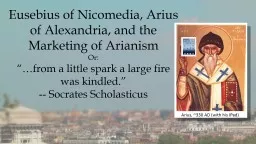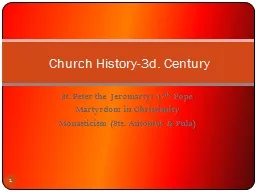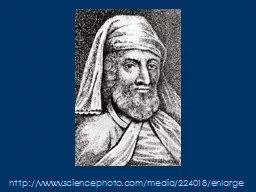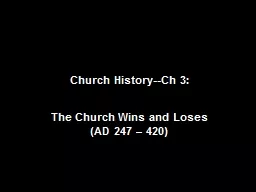PPT-Eusebius of Nicomedia, Arius of Alexandria, and the
Author : pasty-toler | Published Date : 2016-03-26
Marketing of Arianism Or from a little spark a large fire was kindled Socrates Scholasticus Arius 330 AD with his IPad Different Methods of Marketing Religious
Presentation Embed Code
Download Presentation
Download Presentation The PPT/PDF document "Eusebius of Nicomedia, Arius of Alexandr..." is the property of its rightful owner. Permission is granted to download and print the materials on this website for personal, non-commercial use only, and to display it on your personal computer provided you do not modify the materials and that you retain all copyright notices contained in the materials. By downloading content from our website, you accept the terms of this agreement.
Eusebius of Nicomedia, Arius of Alexandria, and the: Transcript
Download Rules Of Document
"Eusebius of Nicomedia, Arius of Alexandria, and the"The content belongs to its owner. You may download and print it for personal use, without modification, and keep all copyright notices. By downloading, you agree to these terms.
Related Documents














